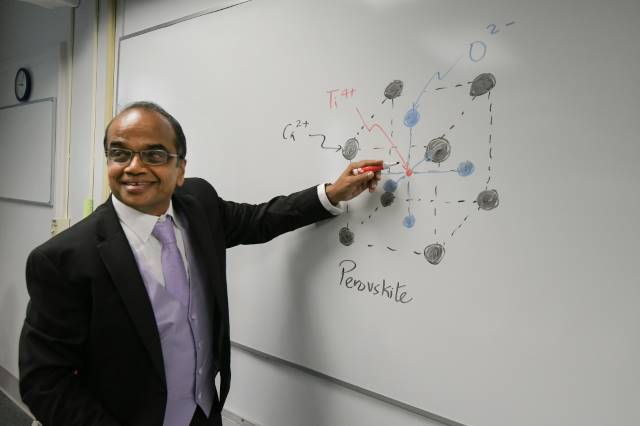
Credit: Alfred University, S.K. Sundaram
You registered (or are planning to register) for the 25th International Congress on Glass (ICG 2019) in Boston, June 9–14. You made your hotel reservations. You plan to reconnect with colleagues and listen to subject matter experts share their latest cutting-edge research. You may even spend a few extra days to take in the sights and sounds of Boston.
If you plan to add a few days to your itinerary, why not spend one of those days learning something new in one of two ACerS short courses?
Ultrafast Glass Science and Engineering
June 9, 8:00 a.m.–Noon
ACerS Fellow and course instructor S.K. Sundaram says that graduate students, researchers, educators, engineers, and technologists would all benefit from this course.
“The course materials will cover fundamental science as well as processing and engineering about equally,” he explains in an email. “The participants will be able to gain understanding of fundamental processes and timelines as well as an overview of the tools and techniques in this area they can apply in their research and engineering practice.
“The course offers an opportunity to learn how cutting-edge ultrafast lasers and tools can be used to study, process, and control glasses and their functionalities over time and spacial resolution,” he adds.
As Inamori Professor of Materials Science & Engineering at Alfred University, Sundaram currently covers some aspects of ultrafast glass science in his optics and photonics course. In that class, he says, “students irradiate specific glass samples with femtosecond laser pulses and study changes.”
When asked what the most common questions are that participants might ask during the short course, Sundaram gives three examples: “What does a laser pulse do to glasses?”, “What happens in glasses in femtosecond and shorter timescales?”, and “How can I use the cutting-edge tools in my work or research?”
Sundaram will also present examples of novel phenomena in glasses and fabrication of unique structures and features such as ultrafast writing of gratings, waveguides, unique structures in glasses, crystal growth in glasses, and strengthening of glasses.
And the most important takeaway for participants? “Short laser pulses can be used to probe and study glasses as well as to process and locally modify glasses to generate infinite routes and options to novel structures and functionalities with a greater control over glassy state,” Sundaram adds.
Visit this link to learn more and to register for Ultrafast Glass Science and Engineering.
Glass Corrosion
June 9, 8:30 a.m.–4:00 p.m.
Stephane Gin, senior scientist at CEA France, will lead a group of six speakers who will share their expertise on the mechanisms of glass corrosion and their relation with kinetics. The focus will be on nuclear, commercial, natural, and archaeological glasses, and will address the big question: How do silicate glasses behave when they come in contact with water?
Along with Gin, speakers include John Vienna and Joseph Ryan, research scientists at Pacific Northwest National Laboratory; Jincheng Du, professor of materials science and engineering at North Texas University; Nick Smith, research associate at Corning Inc.; Delia Brauer, professor of bioactive glasses at Friedrich Schiller University Jena; and Aurélie Verney-Carron, professor at University of Paris-Créteil.
Gin, Ryan, Du, and Vienna were part of a research team that published a paper last year on the subject of glass corrosion.
Visit this link to learn more and to register for Glass Corrosion.
